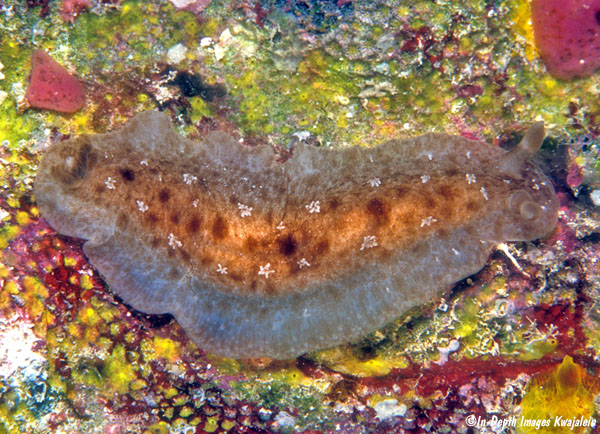
Dendrodoris elongata is aptly named, being a very elongate nudibranch. Whether that is the correct identification for some or perhaps even all of the animals figured here is in some doubt. Certainly many of the variable specimens figured below match figures of Dendrodoris elongata on the web or in popular books. The species was described from a single specimen by Baba (1936); the written external description is a bit sparse, but the figure (bottom of page) does resemble some of our specimens. Certain key features illustrated or mentioned in some subsequent references, in particular stellate patches of opaque white in two or more rows along the length of the dorsum, are not mentioned or figured by Baba. We figure numerous Marshall Islands specimens below, which although they vary from white to brown in background color, share the elongate shape and variably sized dorsal spots, and mostly the stellate patches of white, although the latter are in some instances very faint and difficult to discern. Given the variability, it is possible that some of these animals represent similar but different species as part of a species complex; a good look at the molecular data of a number of specimens would be helpful. All forms pictured below have been found at Kwajalein and Enewetak Atolls, and at least one has also been observed at Bikini Atoll. Specimens have also been recorded at Rongelap Atoll by John and Lynette Flynn. They are typically found by day under rocks, often under rocks that are partly buried in the sand, from the intertidal down to at least 15 meters. They move quickly away when exposed to light. Measured specimens have ranged in length up to 75mm but we have seen them larger. Sometimes you'll see specimens without the white star-like dorsal blotches listed as Dendrodoris albobrunnea. However, examining just the photos below, it can be seen that those blotches vary from faint to distinct, on both whitish and brownish individuals. It seems more likely that they are all varieties of one species. Dendrodoris elongata was first reported in the Marshalls from Enewetak, Kwajalein and Bikini Atolls by Johnson & Boucher (1984).

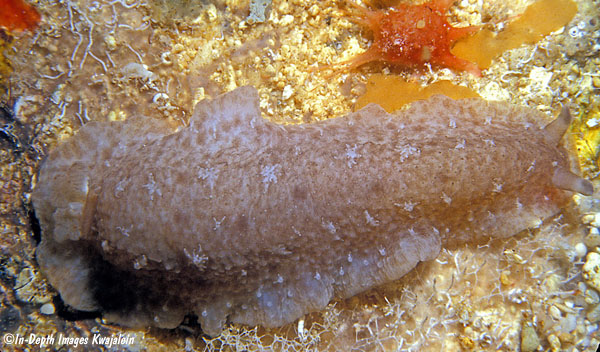
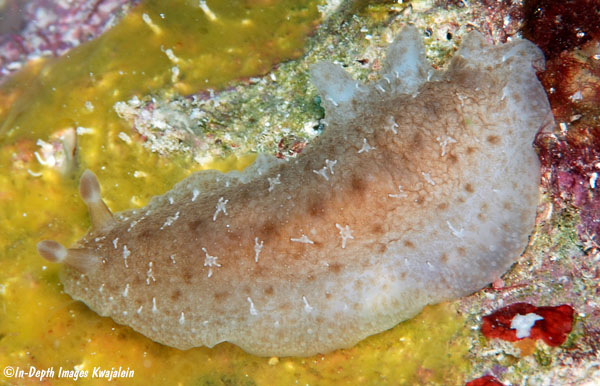
Typical brownish specimens often have distinct white stellate spots running along the dorsum. Lateral to these are additional pointed white spots that look like little white tendrils poking up from the body but in fact are just elongate white stick-like spots on the mantle.
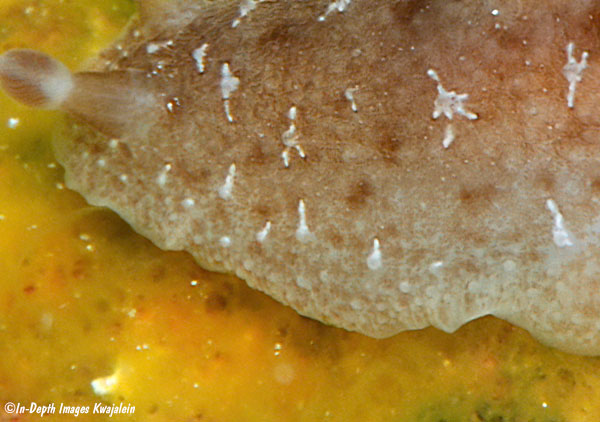
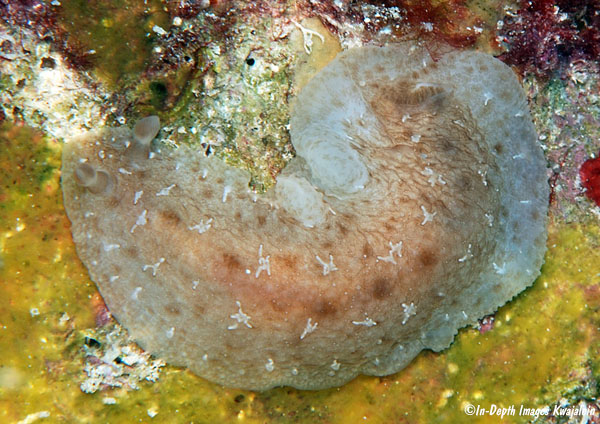
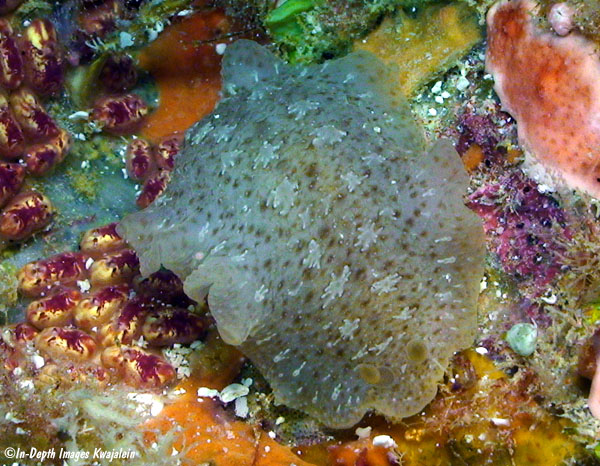
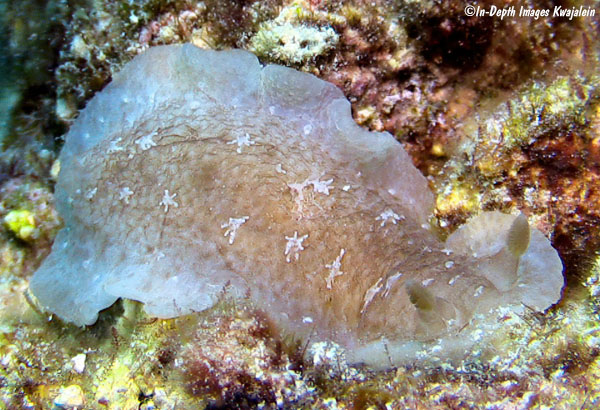
Baba (1936) notes that the underside is uniformly dirty yellow, but the little bit visible in the photo below looks like there may be some small brown spots on the sides of the foot.
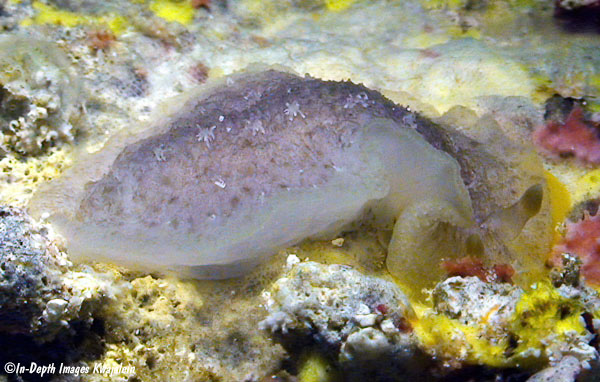
Some are less brown but still have distinct white stellate spots.
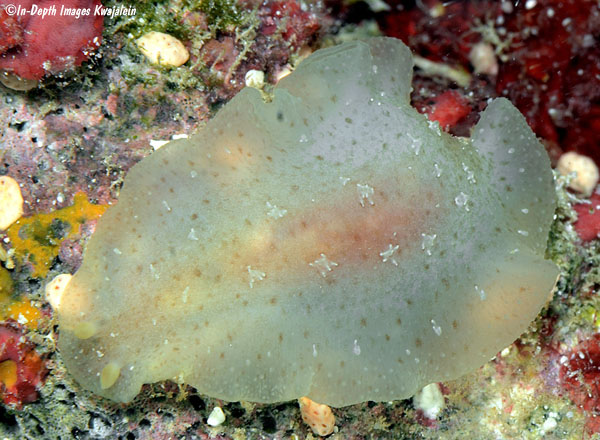
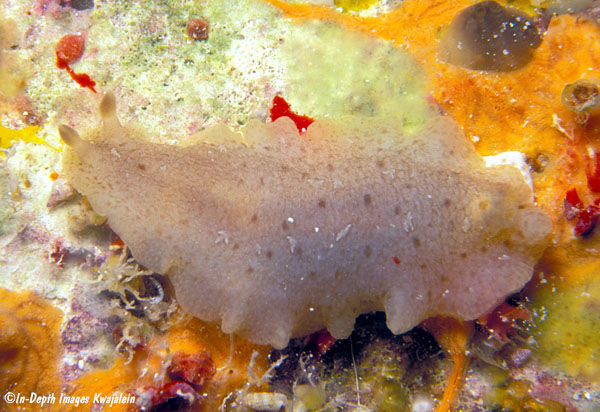
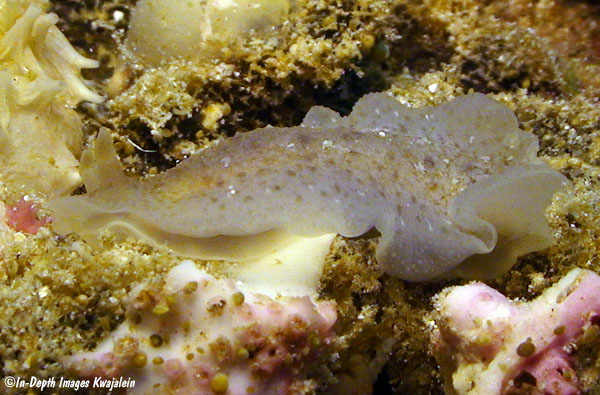
Sharing a chunk of loose sponge with several Glossodoris rufomarginata.
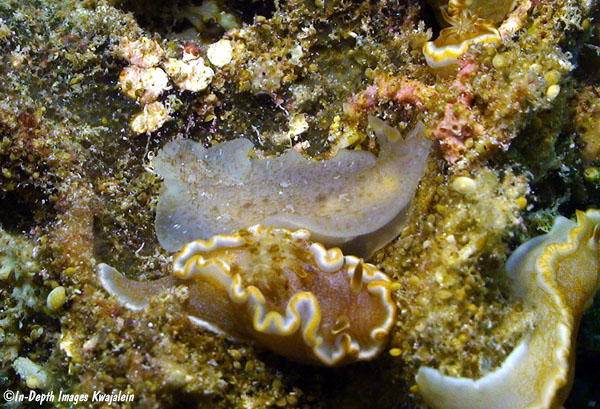
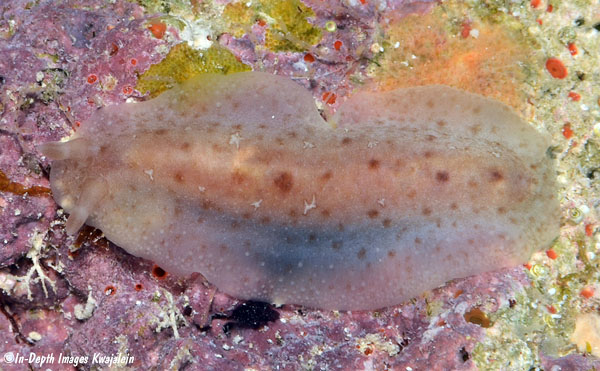
On this one the white stellate spots are hard to see, but you can still pick them out.
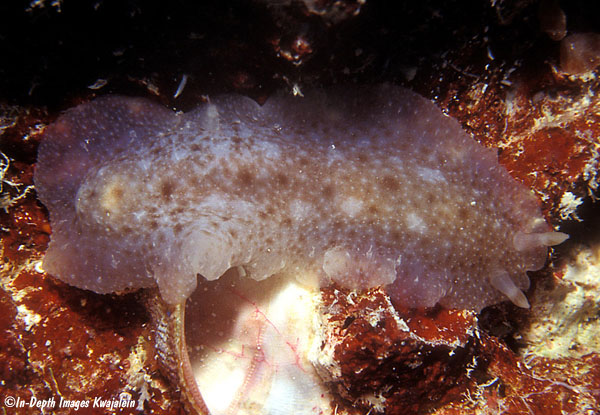
The white spots are barely visible in clear patches on the mantle.
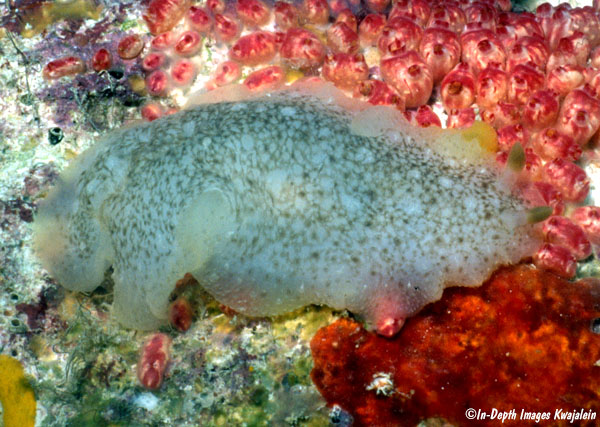
Zooming in and increasing contrast on the previous picture, you can barely see the spots.
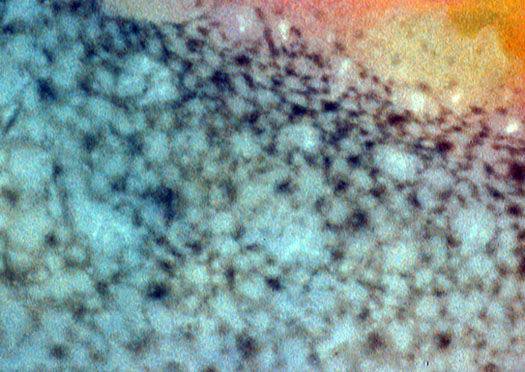
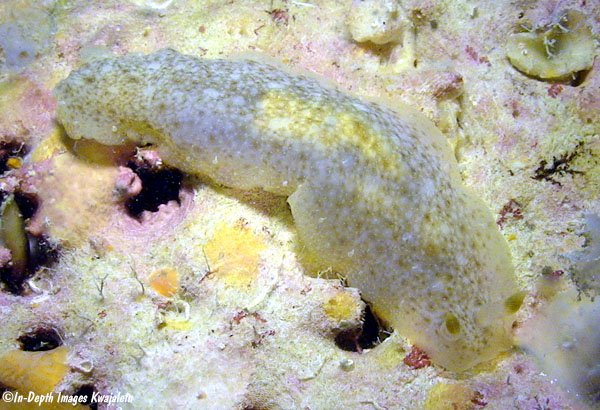
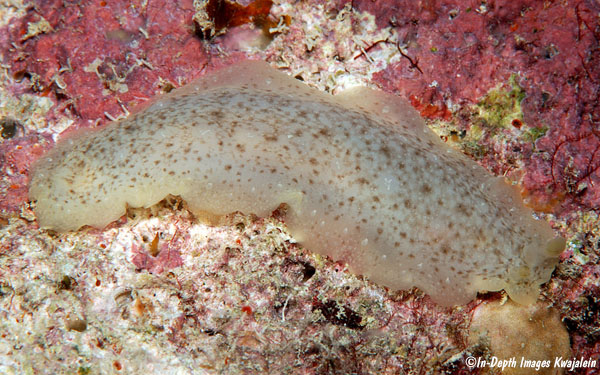
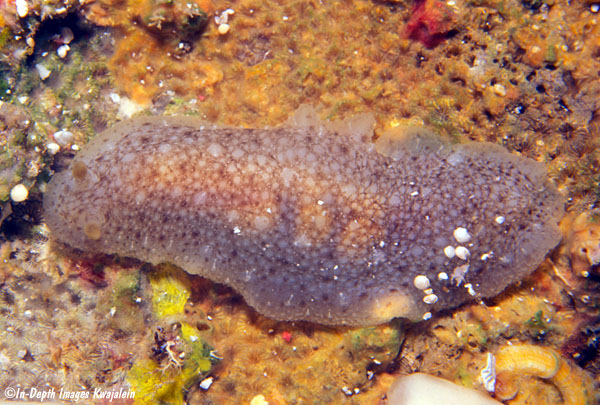
With an egg mass.
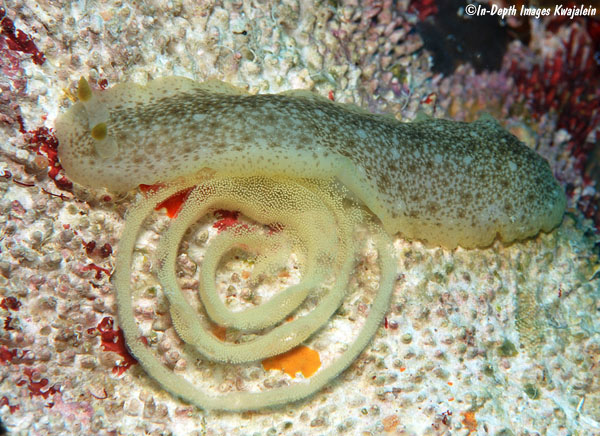
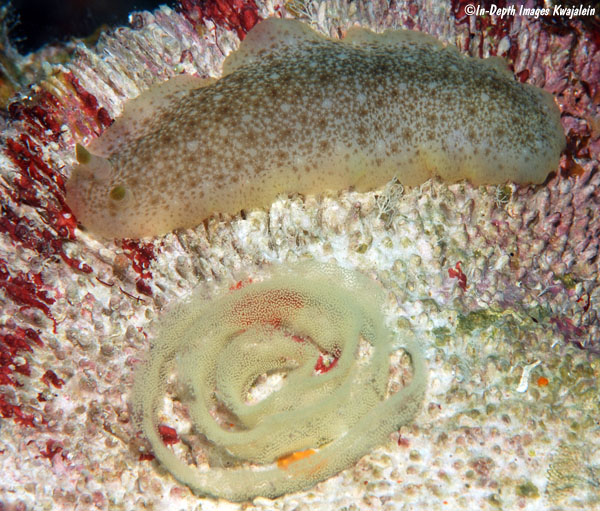
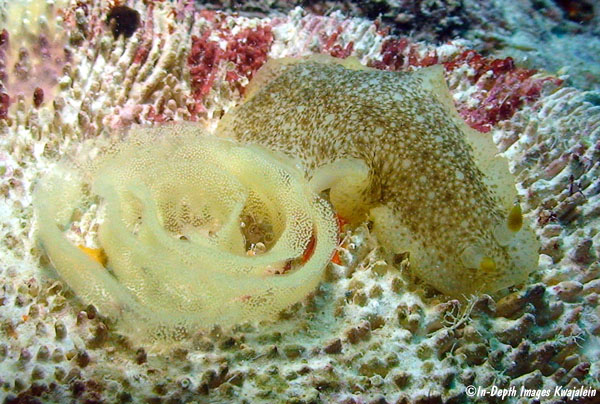
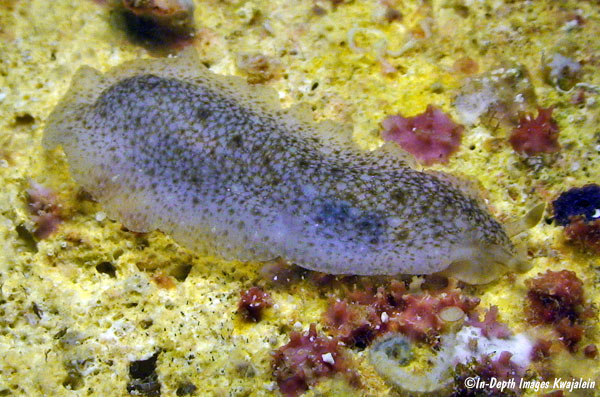
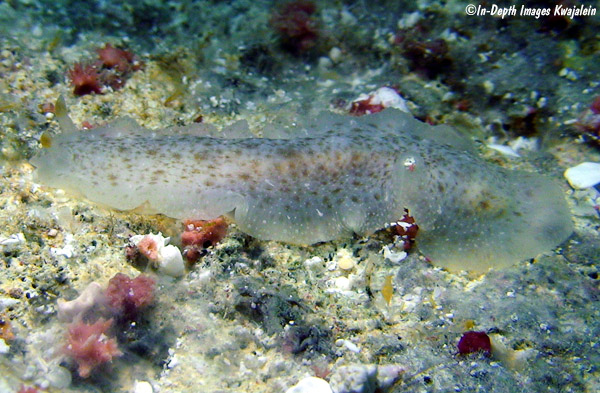
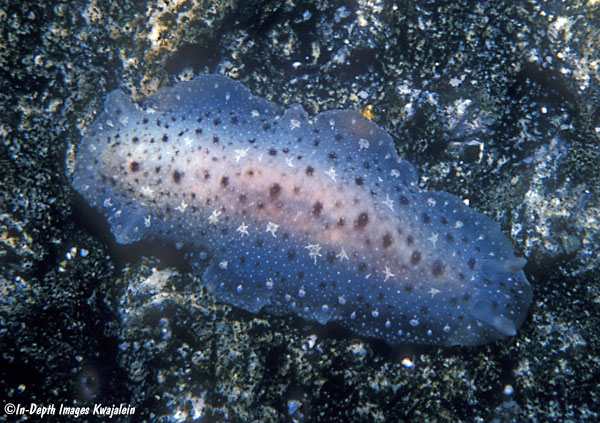
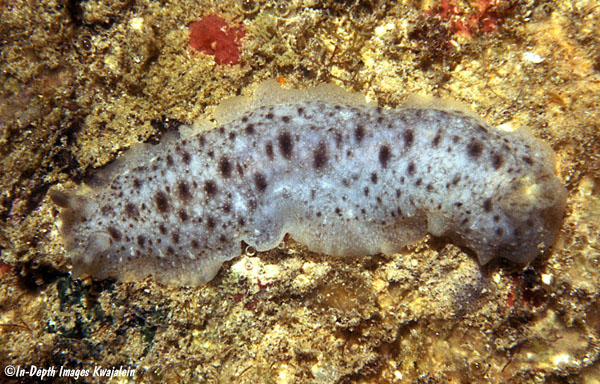
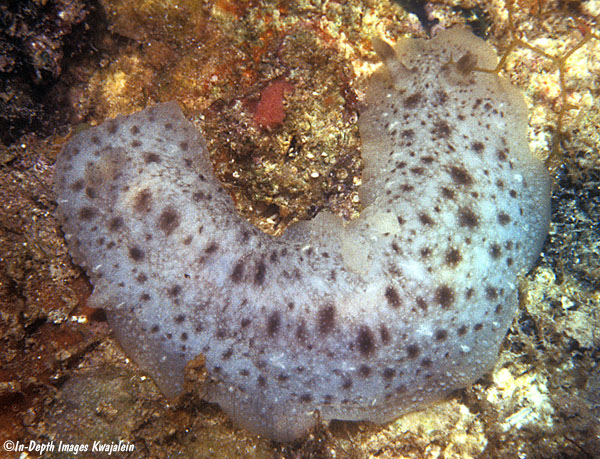
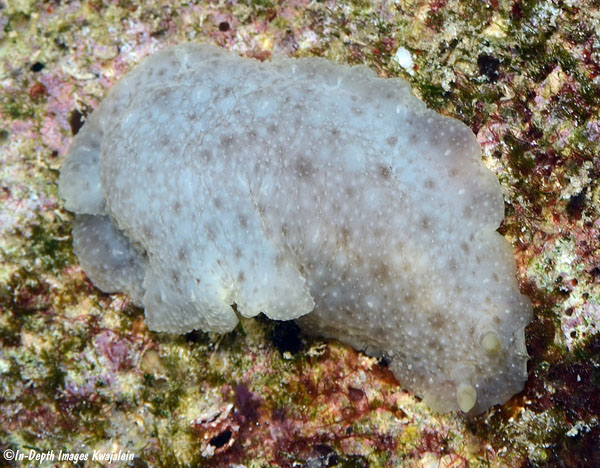
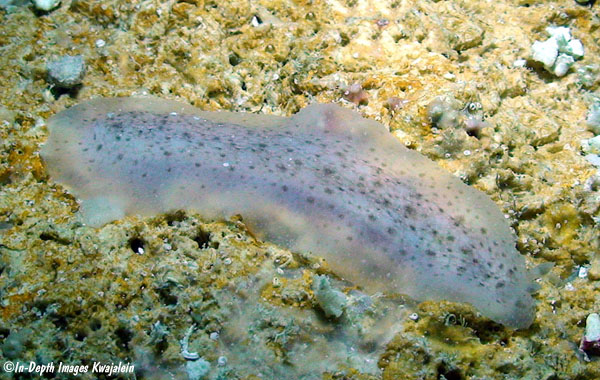
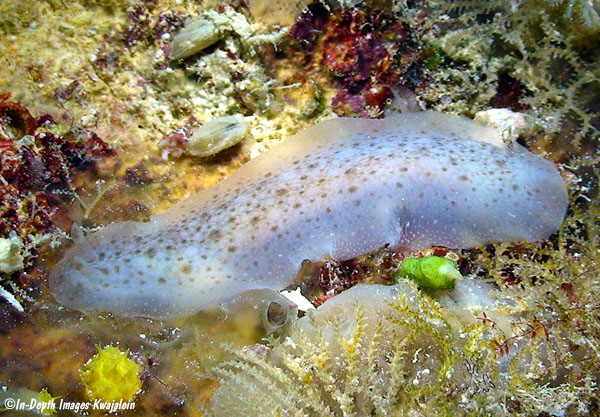
A young individual.
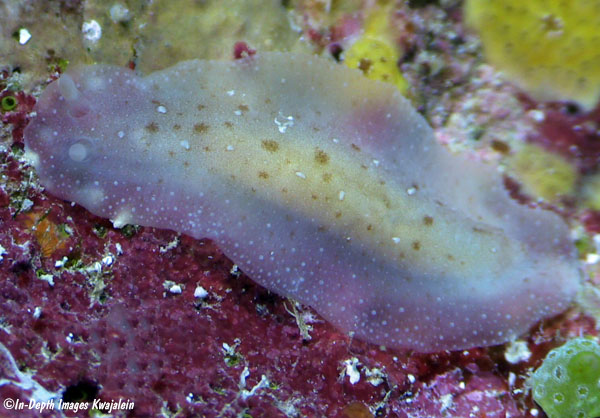
Original figure from Baba (1936).
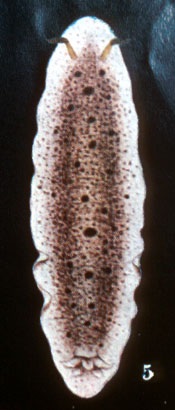
Created 26 December 2006
Updated 15 November 2021